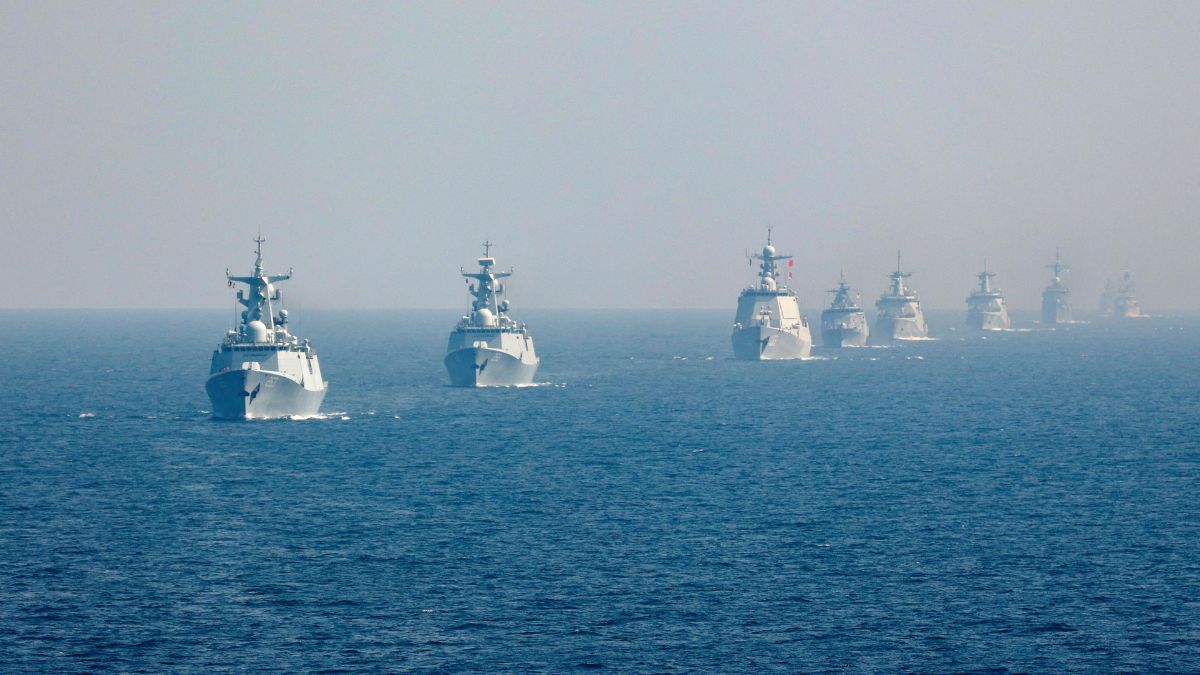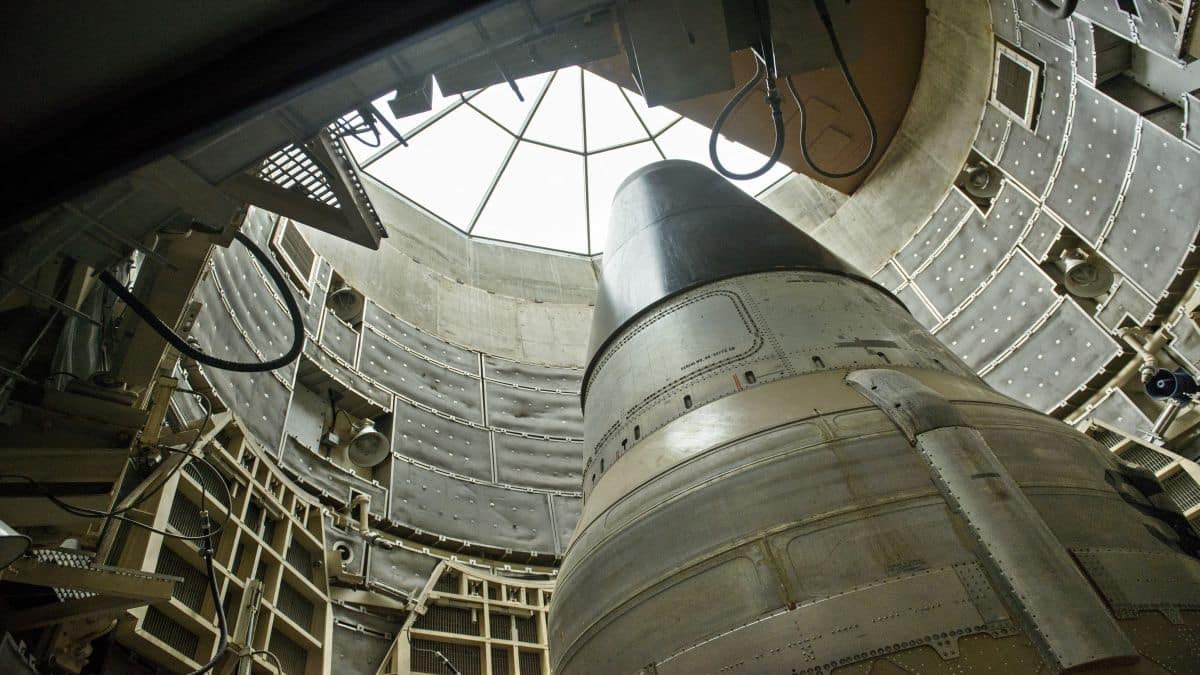The Pakistan Navy is preparing to induct the first of eight Chinese-built Hangor-class submarines into active service.
The deployment, expected in 2026, is seen as a significant leap in Islamabad’s naval capabilities and aimed at challenging India’s long maintained strategic dominance in the Indian Ocean.
Pakistan’s Chief of Naval Staff, Admiral Naveed Ashraf, confirmed that the country’s submarine acquisition programme with China is “progressing smoothly.”
Speaking to China’s Global Times in an interview published on Monday, Admiral Ashraf said the new submarines would “boost Pakistan’s ability to patrol the North Arabian Sea and Indian Ocean.”
How China is aiding Pakistan’s defence ambitions
Under the agreement, valued at nearly $5 billion, Islamabad will receive eight Hangor-class diesel-electric attack submarines by 2028.
The first four vessels are being built in China, while the remaining four will be constructed at Karachi Shipyard & Engineering Works in Pakistan to boost the country’s indigenous shipbuilding capability.
Three of the submarines have already been launched into China’s Yangtze River from a shipyard in Hubei province, marking a major step forward in the bilateral defence partnership.
Ashraf described China’s military technology as dependable and aligned with Pakistan’s operational requirements.
“Chinese-origin platforms and equipment have been reliable, technologically advanced and well-suited to Pakistan Navy’s operational requirements,” he said.
He also highlighted a growing focus on modern technologies within naval operations. “As modern warfare evolves, emerging technologies such as unmanned systems, AI and advanced electronic warfare systems are becoming increasingly important. The Pakistan Navy is focusing on these technologies and exploring collaboration with China,” he added.
Pakistan’s deepening defence ties with Beijing extend far beyond submarines. Over the past decade, the two allies have worked closely across multiple domains — from aircraft and missile systems to naval hardware.
Data from the Stockholm International Peace Research Institute (SIPRI) shows that between 2020 and 2024, Pakistan accounted for more than 60 per cent of China’s total arms exports, making it Beijing’s largest defence customer globally.
Ashraf said Pakistan-China cooperation “goes beyond hardware; it reflects a shared strategic outlook, mutual trust, and a long-standing partnership.”
He added, “In the coming decade, we expect this relationship to grow, encompassing not only shipbuilding and training, but also enhanced interoperability, research, technology sharing and industrial collaboration.”
Beijing, meanwhile, has reinforced this relationship through significant investments in Pakistan’s maritime infrastructure, particularly along the Arabian Sea, under the China-Pakistan Economic Corridor (CPEC) — the flagship component of China’s Belt and Road Initiative (BRI).
How CPEC plays into Beijing’s maritime strategy
The 3,000-kilometre-long China-Pakistan Economic Corridor connects China’s Xinjiang province to Pakistan’s deep-water Gwadar Port on the Arabian Sea. Officially designed as an economic project, the corridor holds deep strategic importance for Beijing.
It provides China with direct access to the Arabian Sea and a secure route for importing energy resources from West Asia while bypassing the Strait of Malacca — a narrow maritime chokepoint that could be vulnerable during wartime.
This network not only enhances China’s ability to safeguard its energy lifelines but also expands its geopolitical reach westward into Afghanistan, Iran, and Central Asia.
Together with its established presence in Myanmar and strengthening ties with Bangladesh, Beijing’s involvement in Pakistan effectively encircles India.
For Pakistan, the submarines and maritime infrastructure under CPEC collectively strengthen its ability to secure its trade routes and protect its coastline.
What we know about the Hangor-class: China’s export variant for Pakistan
The Hangor-class submarines are a customised export version of China’s Type 039A Yuan-class vessels. They are diesel-electric attack submarines, designed to operate in littoral and open-sea environments.
The name “Hangor” revives the legacy of the original PNS Hangor, which sank the Indian frigate INS Khukri during the 1971 Indo-Pak war — a symbolic reminder of one of Pakistan’s rare naval victories.
These modern submarines are equipped with four diesel engines and an air-independent propulsion (AIP) system that allows extended underwater endurance.
Conventional diesel-electric submarines must surface or snorkel every few days to recharge their batteries, making them vulnerable to detection. In contrast, the AIP system enables the Hangor-class to remain submerged for up to 15 to 20 days, enhancing stealth and survivability.
Each submarine displaces around 2,800 tonnes, measures 76 metres in length, and is 8.4 metres wide at its broadest point, with a draught of about 6.2 metres.
The design includes six 21-inch torpedo tubes capable of launching torpedoes and anti-ship missiles, including the Babur-3 subsonic cruise missile, which has a range of 450 kilometres.
While the Hangor-class provides Pakistan with enhanced endurance and strike capabilities, the submarines face limitations in manoeuvrability due to their larger size compared to India’s Kalvari-class submarines.
The Hangor’s reported top speed is around 20 knots (approximately 37 km/h), similar to that of its Indian counterpart.
How Pakistan’s Hangor-class compares with India’s Kalvari-class
India’s Kalvari-class submarines, based on the French Scorpène-class design, are known for their agility and advanced European weapon systems. India currently operates six Kalvari-class submarines, and three more are expected to be inducted by the early 2030s.
The Kalvari-class vessels displace around 1,775 tonnes and are 67.5 metres long, making them smaller and more manoeuvrable in shallow coastal waters than the Hangor-class.
However, the absence of a built-in AIP system gives the Pakistani submarines a potential edge in underwater endurance — a factor that could influence stealth operations in deeper waters.
In terms of weaponry, India’s Kalvari-class submarines are equipped with German-made 21-inch torpedoes and French Exocet anti-ship missiles, along with MICA anti-air missiles. These systems are combat-proven and have been integrated into Indian naval operations with considerable success.
Both submarine classes employ modern sonar and electronic warfare systems, though technical details about the Hangor-class sensors remain classified.
India has already initiated plans to equip its existing Kalvari-class submarines with an indigenously developed AIP system to bridge this endurance gap.
While the Hangor-class enhances Pakistan’s underwater warfare capability, it does not alter the larger strategic equation: India’s navy remains substantially more powerful in size, experience, and reach.
How India’s naval directory shadows Pakistan’s
India currently maintains one of the most formidable navies in the world. With a fleet of 293 vessels that includes two aircraft carriers, 13 destroyers, 18 submarines, and numerous frigates, India is classified as a blue-water navy — capable of operating far beyond its own maritime boundaries.
Pakistan, by comparison, operates a fleet of about 121 ships and eight submarines, with no aircraft carriers or destroyers, positioning it as a green-water navy focused on regional defence and coastal security.
India’s ambitions extend further. The Ministry of Defence has outlined plans to expand the Indian Navy with a strong focus on domestic shipbuilding, with more than 60 vessels currently under construction in Indian shipyards.
These include 11 next-generation offshore patrol vessels, 16 anti-submarine warfare shallow-water craft, and several next-generation missile corvettes.
A centrepiece of India’s future naval roadmap is the proposed third aircraft carrier, INS Vishal, which could feature nuclear propulsion and a CATOBAR (Catapult Assisted Take-Off But Arrested Recovery) launch system.
If completed as envisioned, this 65,000-tonne carrier would enable India to operate three carrier battle groups simultaneously — a major step in expanding its maritime power projection across the Indo-Pacific.
India’s maritime strategy focuses on maintaining dominance from the Strait of Hormuz to the Strait of Malacca, safeguarding regional stability, and countering the presence of extra-regional powers such as China.
Pakistan’s naval modernisation, by contrast, is primarily driven by its need to secure its coastline, protect its energy routes, and deter India’s maritime influence — objectives closely tied to CPEC and the Gwadar Port.
Also Watch:
With inputs from agencies


)

)
)
)
)
)
)
)
)



